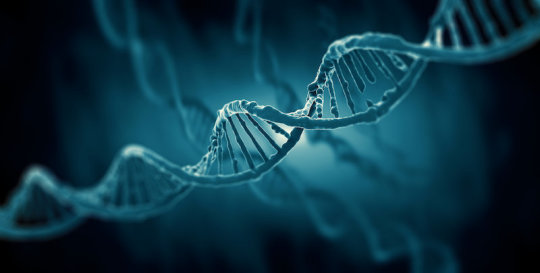[ad_1]
An Ontario-led research group has discovered a novel cancer-driving mutation in the vast non-coding regions of the human cancer genome, also known as the “dark matter” of human cancer DNA.
The mutation, as described in two related studies published in Nature on October 9, 2019, represents a new potential therapeutic target for several types of cancer including brain, liver and blood cancer. This target could be used to develop novel treatments for patients with these difficult-to-treat diseases.
“Non-coding DNA, which makes up 98 per cent of the genome, is notoriously difficult to study and is often overlooked since it does not code for proteins,” says Dr. Lincoln Stein, co-lead of the studies and Head of Adaptive Oncology at the Ontario Institute for Cancer Research (OICR). “By carefully analyzing these regions, we have discovered a change in one letter of the DNA code that can drive multiple types of cancer. In turn, we’ve found a new cancer mechanism that we can target to tackle the disease.”
The research group discovered that the mutation, termed the U1-snRNA mutation, could disrupt normal RNA splicing and thereby alter the transcription of cancer-driving genes. These molecular mechanisms represent new ways to treat cancers carrying the mutation. One of the potential treatment approaches includes repurposing existing drugs, which, by bypassing early drug development stages, could be brought into the clinic at an accelerated rate.
“Our unexpected discovery uncovered an entirely new way to target these cancers that are tremendously difficult to treat and have high mortality rates,” says Dr. Michael Taylor, Paediatric Neurosurgeon, Senior Scientist in Developmental and Stem Cell Biology and Garron Family Chair in Childhood Cancer Research at The Hospital for Sick Children (SickKids) and co-lead of the studies. “We’ve found that with one ‘typo’ in the DNA code, the resultant cancers have hundreds of mutant proteins that we might be able to target using currently available immunotherapies.”
The U1-snRNA mutation was found in patient tumours with certain subtypes of brain cancer, including nearly all of the studied samples from adult patients with sonic hedgehog medulloblastoma. The mutation was also found in samples of chronic lymphocytic leukemia (CLL) — the most common type of adult leukemia — and hepatocellular carcinoma — the most common type of liver cancer.
“This discovery is an example of how OICR is working together with partners in Ontario and across the world to support cutting-edge research that can be used in the development of precision therapies for cancer patients worldwide,” says Dr. Laszlo Radvanyi, President and Scientific Director of OICR.
The two related publications — one which focused on brain cancer and the other on CLL and liver cancer — were both led by researchers in Ontario, including Dr. Michael Taylor, who is also a Professor in the Departments of Surgery and Laboratory Medicine and Pathobiology at the University of Toronto, and Dr. Lincoln Stein at OICR. Both of the studies involved international collaborators including Dr. Xose Puente at the University of Oviedo, Dr. Elias Campo at the Institut d’Investigacions Biomèdiques August Pi I Sunyer (IDIBAPS) and the Universitat de Barcelona and others.
The studies were powered in part by data from the OICR-led Pan-Cancer Analysis of Whole Genomes (PCAWG) project, one of the largest coordinated cancer research endeavors to date that analyzed more than 2,800 cancer whole genomes from the International Cancer Genome Consortium (ICGC).
This research was supported in part by a Translational Research Initiative grant from OICR through funding provided by the Government of Ontario. This work was also funded in part by Genome Canada and SickKids Foundation.
[ad_2]















